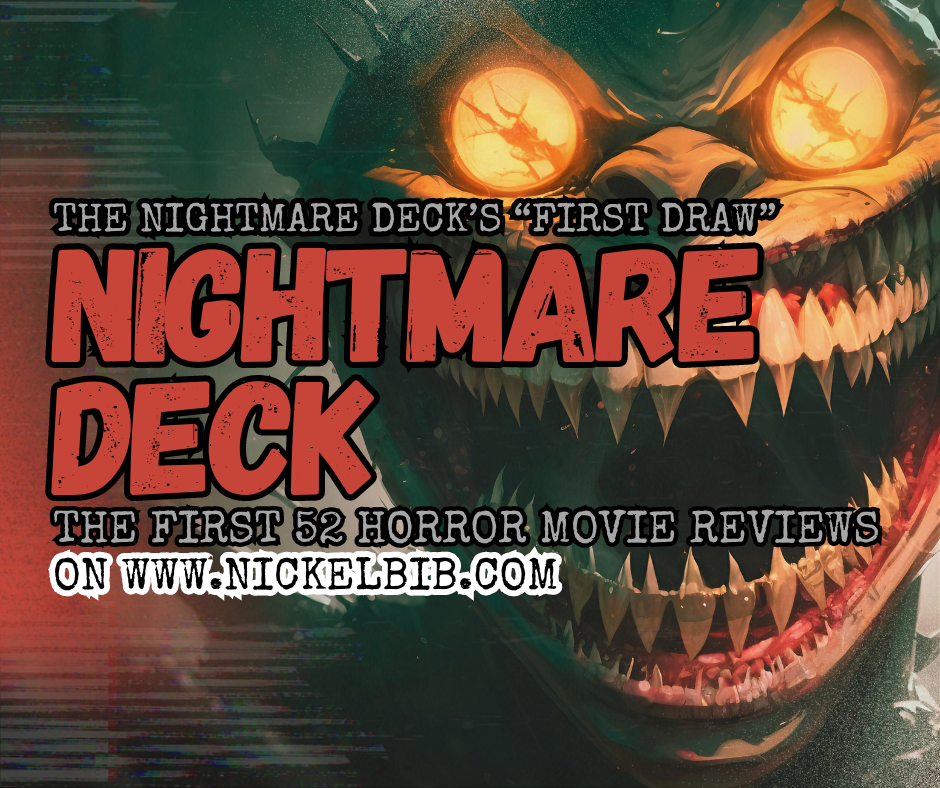Released February 2021, as opposed to September 2020, Curse of the Dead Gods was always doomed to be met by comparisons to Supergiant Games’ breakout hit Hades. I know I’ve already encountered a handful of reviews that have said as much, often criticizing Dead Gods merely on things it does that Hades didn’t. It’s unfair, really, because I think Curse of the Dead Gods brings a lot of new, unique ideas to the fray and even does certain things I enjoyed more than what was done in Hades (which I reviewed and gave a very positive score of 4.0 out of 5.0).
Be that as it may, it is kind of neat how much alike both of them feel. Clearly, Passtech Games (the developers) didn’t stumble across Hades in September and go on a Hades-inspired crunch to make Curse of the Dead Gods in a fourth a year, and so, all of it is coincidental, but still. There’re a lot of differences, especially as you peel back the gameplay and how everything works, but they almost feel complimentary to each other. They even launched on Xbox GamePass (with their Xbox console release), and that is the version I used for each review.
Both are played through an isometric perspective, however, where Hades found influence in Greek myth, Dead Gods focuses more on Aztec myth.
I like the aesthetic of Dead Gods, but I have to admit the visuals felt like a major hindrance throughout.
This is because of the way the videogame approaches light. Your character carries a torch, along with a main weapon, secondary weapon, and even a two-handed weapon, and, as he progresses, he has the option of lighting fires throughout the dungeons. Enemies can break fires and leave you in the dark again, however, leaving you susceptible to increased damage.
While, at first, I found that to be an interesting component for Dead Gods, I soon discovered how often it could be difficult to see things. This isn’t pitch black darkness by any means, however, when a horde of enemies are on your tail, all while you’re trying to dodge traps and navigate strategically, it can become difficult to find yourself in the scuffle. It makes for a grimier, dirtier aesthetic, which I felt did a disserve to the visuals overall.
I’ve beaten Dead Cells about half-a-dozen times by now and, by the end of Hades, I found myself more-or-less completing each run without fail. This isn’t a brag by any stretch of the imagination. The amount of players who’ve beaten Dead Cells at the highest difficulty, in the fastest way, I know better than to have a swelled head. Instead, I say this because I found Curse of the Dead Gods to be a more difficult experience than either of them.
Although Dead Gods, at its core, is a hack-and-slash, I found it far more complex, with far more variables than Hades. This isn’t to say it’s better, per se. I’ll land where I land, but it has a lot of ideas, perhaps too many ideas, on display.
Curse of the Dead Gods doesn’t concern itself much with characterization or story. I can’t remember who the main-protagonist is and I have only a vague understanding of what I’m trying to accomplish. That’s the bread-and-butter of a roguelike (or a Soulslike) and I don’t speak for you, but I’m entirely alright with that. For certain, I loved Hades’ character portrayals and little subplots, but it isn’t exactly the meat of the average roguelike experience. It’s all about the dungeons, right?
Upon entering the dungeons, players are allowed to choose from the first tier sections. Think of it as a pyramid. You choose from three different ways – each has a series of floors, then, a unique boss battle. After that, you complete that section. Eventually, you’ll unlock second tier sections. This is the same as playing the first tier section, but, once you complete that section and defeat the boss, the run will continue and you’ll have to make it to, and defeat, a second boss.
I think it is a neat idea and I think it added new phases of satisfaction to Curse of the Dead Gods overall.
Something else you’ll notice, too, is the Curse system.
This is the most interesting, controversial aspect about Curse of the Dead Gods. Each playthrough, the player is allowed a gauge that gradually fills up with corruption. The character builds corruption through many different ways. Every time you complete a section and enter into a new section, your corruption worsens. If you’re attacked by a certain enemy who is themselves corrupted, you gain corruption. If you don’t have the gold to pay for an item, you can use corruption to compensate instead. At health fountain, corruption must be paid as tribute to heal.
What is the corruption? Basically, every time your corruption meter fills up, you are cursed. The consequences are randomized and can range from being a mixed-bag (pay 300g each time you enter a new section, but you also gain 10% health!), a little annoying (opening chests inflictions corruption), or outright obnoxious (the camera invert at random).
If you fill your corruption meter up too many times, however, then your character will begin hemorrhaging life points until death.
Couple everything together, and there is a lot of strategy at play with Curse of the Dead Gods. You will find every decision deceptively simple, and be patting yourself on the back for making the right call and swearing up a storm for discarding a Relic or special perk that could’ve made all the difference for you. Things like whether you need that weapon upgrade bad enough to risk a Curse or whether you can skip a Health Fountain will all become factors in your progression.
Curse of the Dead Gods has a lot of neat ideas, and importantly, its gameplay in-dungeon is fun enough to keep you coming back for another round.
Until the very moment it isn’t, that is. As much fun as I had with Curse of the Dead Gods, I can’t help but leave it feeling as though it were more an experiment than a perfected product. This isn’t a fair representation of what Dead Gods is though. At its core, Dead Gods has fun gameplay and a lot of ambition, but I think, maybe, it may’ve swallowed its tail overtime.
A lot of it is small things. All of which, I feel, could easily be tweaked or reworked, and thus, improved. A lot of it comes down to the Curse system. As fun and unique an idea as it is, like a lot of Curse Gods, I feel they go a step too far with it.
It can be fun to strategize how to approach the corruption. However, in some instances, it can feel cheap and outright brutal. Remembering what I said about how hard it can be to see at times in Dead Gods, factor in the enemies that can hit you and inflict corruption.
I’ve had runs where everything has gone right, only to be ruined because I’m cornered by corrupted enemies. In spite my full health, their attacks are devastating because the corruption. Sometimes it’s minimal, other times, it is enough to end a 30-40 minute playthrough straightaway, because once you’ve filled the gauge, it’s over with.
Couple that in with curses that can only worsen the visuals, be it the flipped camera-angle perspective or one Curse which sees the character experience ‘hallucinations’ every time their hit, and it can start to feel like your run can be thrown away at the the drop of a dime.
Like any difficult videogames, most players can overcome through repetition. They find the skillset or they recognize enough patterns that they can break through. That in mind, I found my interest in Dead Gods’ gameplay to wane before that type of progression could happen. There has to be a balance there, and I didn’t feel Dead Gods’ once praiseworthy gameplay became tedious without it.
Criticisms about difficulty are, conveniently, difficult to write about. When I do it, I can already hear the obnoxious gamer in the back of my head, spouting “Get gud!” again and again. I’ve never understood that opinion. That elitist mindset that when reviewing playability, difficulty can never, ever be something worth factoring in.
Videogames are entertainment, and the only thing I can offer on Die Die Retry is a recount of how I was entertained or not. As someone who is now 50 hours into Elden Ring, getting smashed to pieces by the Fire Giant, or someone who has already reviewed Hades, Dead Cells, Skul: The Hero Slayer, and loved Cuphead to pieces, I think I’ve proven to myself I am open-minded and willing to apply myself to a challenge.
For that reason, I feel like Curse of the Dead Gods could afford to reel in some of its worse impulses. Not altogether! In Dead Cells, when you’ve completed it once, you unlock a Boss Stem Cell, and can equipped it for sort-of a New Game + caliber playthrough (and then, another Boss Stem Cell, then another, etc.). I believe Dead Gods should consider reserving some of its Curses / curse buildups for a New Game + experience.
As, from where I stood, it did a disservice to my playthrough and I feel aspects like the aesthetic and gameplay (which, while fun, can become repetitive) would’ve reaped a significant benefit. There is a lot to like, and I would hate to see so much of it be overlooked or written off.






GIPHY App Key not set. Please check settings